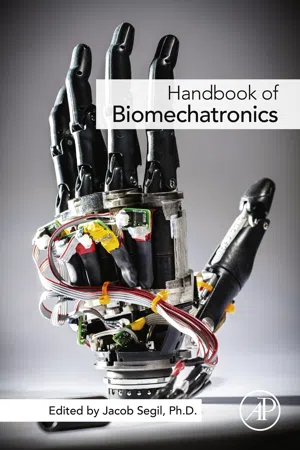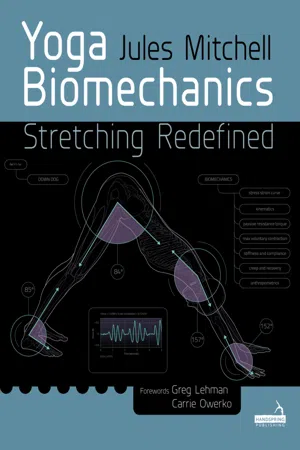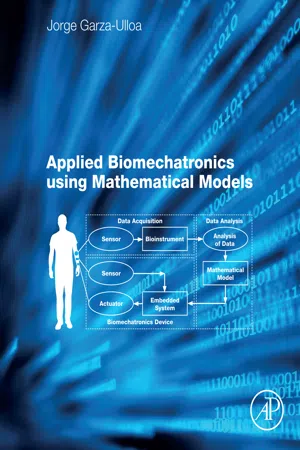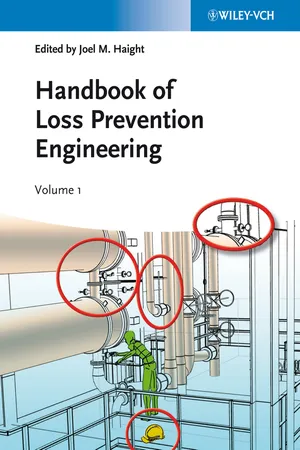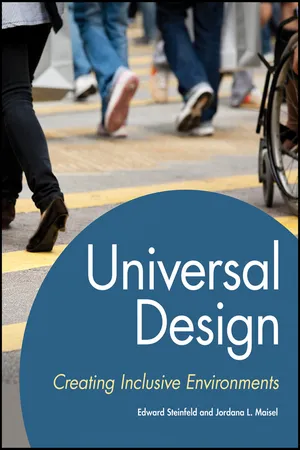Technology & Engineering
Human Biomechanics
Human biomechanics is the study of the mechanical aspects of the human body, including how muscles, bones, and joints work together to produce movement. It involves analyzing forces, motion, and energy to understand human performance and injury prevention. By applying principles of physics and engineering, biomechanics helps in designing equipment and technologies to enhance human movement and function.
Written by Perlego with AI-assistance
Related key terms
Related key terms
1 of 4
Related key terms
1 of 3
6 Key excerpts on "Human Biomechanics"
- eBook - ePub
- Jacob Segil(Author)
- 2018(Publication Date)
- Academic Press(Publisher)
Biomechatronics is the discipline that aims to integrate mechatronic and biological and in particular the human physiological systems. The potentials offered by human body are so diverse that traditional approach to engineering solutions is routinely challenged. Cellular characteristics leading to the functioning of different organs create situations where established engineering principles are easily overstretched. The traditional mechatronic educational programs may thus require an overhaul and other contributions to make the new generations of mechatronic specialists fully versed with characteristics of human body and biological systems in general. The new generation of multidisciplinary specialists will have to be prepared to help biorobotic, biotechnology, and biomechatronic startups as well traditional robotic and automation forums.Hand Book of Biomechatronics aims at establishing the infrastructure for this school of thought.1 Engineering Approach
The design of multiscale and multidisciplinary systems evolves around an efficient integration of both biomechatronic and human body systems. A successful integration requires an appreciation of how engineering principles could be adopted to provide a mathematical description of function and performance of anatomical and physiological systems. The human body should in effect be viewed as a sophisticated engineering system. There are numerous instances to support this argument.Nonspecific low-back pain, which is experienced by many at some point throughout their lives, with no tangible medical solution, could be viewed as a structural problem with a biomechanical solution in the form of design of exercise programs. Phenomena such as heat and mass transfer, fluid flow, translational and rotational movements are areas where Newtonian and non-Newtonian mechanics govern the functions of organs. Biomechanics provides the constitutive equations describing physical characteristics of both the soft and hard tissues. The constitutive equation for a soft tissue for example, could describe the organ characteristics using a psuedoviscoelastic approach. - eBook - ePub
Yoga Biomechanics
Stretching redefined
- Jules Mitchell(Author)
- 2019(Publication Date)
- Handspring Publishing(Publisher)
Biomechanics is defined as the study of how force affects biological systems. It is classified as a division of kinesiology, which is the study of human movement and includes many branches. A student of kinesiology may study anything from the art of dance to coaching football; the metabolic effects of cardiovascular activity to the psychology of sport; human performance to injury rehabilitation; or the development and sustainability of human movement from infancy to old age and in special populations. Biomechanics, although it is a division of this broader field of kinesiology, still covers a wide scope of applications. A biomechanist may design ergonomic office furniture, equipment, or footwear and sports equipment. A biomechanist may work for sports teams in either the training or the rehabilitation division, or both. A biomechanist could work in a laboratory and engineer artificial tissues to replicate the behavior of human tissues for surgical procedures. Therefore, biomechanics itself has many of its own subdivisions and includes specific areas of study that not all other divisions of kinesiology require (Table 1.1). In spite of the variety of disciplines biomechanics encompasses, one specific topic is the focus of this book: mechanical forces and how they apply to the human body. Force Force is the operative word in the definition of biomechanics; not anatomy, not alignment, not movement cueing. The term biomechanics can be misleading, as only an engineer or physicist would assume the mechanics portion of the term implies force. Yoga teachers often associate mechanics with joint position (e.g. “knee over the ankle”) or limb position (e.g. “arms alongside the ears”) because that is what yoga teachers are typically taught. Most pose instructions are, in fact, applied anatomy: “heel-to-arch alignment” is an example of applied anatomy, or what is referred to as alignment in yoga - Jorge Garza Ulloa(Author)
- 2018(Publication Date)
- Academic Press(Publisher)
Today the technology has shrinking the world, news, researches and communications are available in an instant, allowing us to stay up to date, do research faster and stay aware of any situation. The basic engineering disciplines have evolved to multidisciplinary engineering branches that allow us to analyzed various solutions from different perspectives, let apply them together to find solutions for neurologic diseases.By Jorge Garza-Ulloa1.0. Introduction
This first chapter covers from the definition of concepts used in this book, to the evolution of basic disciplines to multidisciplinary engineering branches, making focus on: Mechatronics, Biomedical Engineering, and Biomechatronics fields. Then, the need to develop Biomechatronics solutions is deducted, based on how mechanics and electronics can interact with human skeleton, muscles, and nervous system to senses, organs, or limbs damaged by an injury, diseases, or birth defects. Afterward, an analysis of the advantages to have good methodologies for develop Biomechatronics solutions is explained based in Data Acquisition, Data Analysis, and steps to obtain mathematical models to represent behavior of the health problem under study, based in the Kinematics/kinetics of the human body to develop Biomechatronics Devices.A brief study is being performed discussing most frequently human neurological diseases, identifying their need to propose Biomechatronics devices that can be applied to create solutions for human movements disorders, as their diagnosis confirmation, rehabilitation, and if it is possible their correction to help the patients improving their quality of life. To finish this chapter, the near future of Applied Biomechatronics using Mathematical Models are predicted based in the continuous evolution of software (Computer languages based in instructions and programs to perform specific operations in computers) and hardware (collection of all the computer physically parts) expected in the next few years.- eBook - ePub
- Joel M. Haight, Joel M. Haight(Authors)
- 2013(Publication Date)
- Wiley-VCH(Publisher)
Part III Ergonomics and Human Factors EngineeringPassage contains an image Chapter 15 Biomechanics and Physical Ergonomics
Kyung-Sun Lee and Myung-Chul Jung15.1 Introduction
Work-related musculoskeletal disorder (WMSD) is common in industry (Chung, Lee, and Kee, 2003). WMSD causes pain, soft tissue disorder, and articular injury to the musculoskeletal system (Sommerich and Marras, 2006). WMSD can occur in most body parts; however, it is more frequent in the back and hand, such as back pain, carpal tunnel syndrome (CTS), trigger finger, and hand–arm vibration syndrome (Putz-Anderson, 1988). The risk factors of developing WMSD include excessive strength, awkward posture, repetitive use of certain body parts, vibration, and hot and cold temperatures. WMSD accounts for 30.5% of all lost-workday injuries and illnesses in 2010, according to the US Bureau of Labor Statistics (BLS, 2011). Hence many ergonomics researchers are trying to prevent WMSD by assessing physical workload with biomechanics.Biomechanics is the discipline which describes, analyzes, and assesses human movement on a basis of the knowledge of physics, chemistry, mathematics, physiology, and anatomy (Winter, 2009). Biomechanics concerns the mechanical behavior and component tissues of the musculoskeletal system when physical work is performed. The application of biomechanics principles is important in the prevention of WMSD to improve working conditions and performance. This chapter provides a description of some of the fundamental biomechanics of the trunk, wrist, and hand and its applications in ergonomics.15.2 Biomechanics
Biomechanical analysis of human movement can be divided into kinematics, kinetics, anthropometry, and electromyography (EMG), as shown in Figure 15.1 - eBook - ePub
Biotribology of Natural and Artificial Joints
Reducing Wear Through Material Selection and Geometric Design with Actual Lubrication Mode
- Teruo Murakami(Author)
- 2022(Publication Date)
- Elsevier(Publisher)
In biomechanics, the structure and function of living organisms are examined and analyzed from the viewpoint of mechanics such as statics, dynamics, and kinematics. The accumulated biomechanical knowledge and information can be reflected in the elucidation of the roles of structure and property in living organism, the finding of the cause of diseases, and the development of biomedical technologies for diagnosis and medical treatments at clinical fields. The clinical application of artificial joints as an implant arthroplasty is the most successful biomedical technology in orthopedic surgery, in which biomechanics with biotribology play important roles in the optimization of implant design and evaluation of the performance of artificial joints.The target levels of biomechanics are ranged from human body, the organs, tissues, and cells to molecules. For example, the natural synovial joint itself corresponds to one of organs, but in order to estimate the force and deformation of cartilage/bone construct in natural joint, it is required to consider not only the geometry, structure, and material properties of cartilage/bone construct but the mechanical situations of muscular forces, ligament forces, and inertia forces in related musculoskeletal system and/or whole body. In another example, to evaluate the influence of mechanical stimulus on metabolic activities of chondrocyte such as cell viability, proliferation, and production of cellular proteins, it is required to examine not only the response of cells and their components but the cell-extracellular matrix interaction accompanied with fluid flow containing nourishment through cartilage tissue. In biomechanical modeling of living organism with hierarchical structure, the single-scale or multi-scale analysis should be applied by considering the importance of mutual relation between various levels of hierarchy.In addition, the changes with growth or with aging in living organism should be considered in biomechanical modeling. It takes usually more than 15–18years for human musculoskeletal system to grow as an adult body. In analogous way, it takes more than 15years for human joints to grow to matured structure as shown by X-ray images of hand including finger joints and wrist joint in Fig. 2.2 (Sugiura, 1985 ). After birth, babies and infants have very compliant synovial joints with thicker articular cartilage (Fig. 2.2a ). At next step with growing of skeletal system, the ossification occurs at growth cartilage area and articular cartilage becomes thinner (Fig. 2.2b–c ). At fifteen-and-a-half years old, the synovial joint attains the structure and morphology as matured joint (Fig. 2.2d ). Therefore, we should pay attention to the fact that typical human joint model shown in Fig. 1.10 - eBook - ePub
Universal Design
Creating Inclusive Environments
- Edward Steinfeld, Jordana Maisel(Authors)
- 2012(Publication Date)
- Wiley(Publisher)
Biomechanics, like anthropometry, is an interdisciplinary field. Industrial engineers have studied biomechanics to identify strategies for reducing workplace injuries due to lifting heavy objects and cumulative trauma. They also study the parameters of comfortable seating, how tasks can be simplified to reduce effort, and the biomechanical causes of injury from accidents. Psychologists involved in this field develop instruments to measure comfort, which is a psychological construct. Physicians and biomedical engineers study biomechanics to develop new surgical procedures and develop better artificial joints. Rehabilitation therapists traditionally have studied biomechanics to develop improved therapies, assistive technologies, and environmental interventions that improve independence for people with disabilities. Exercise therapists and physiologists study stamina and strength under different conditions. Architects, interior designers, and product designers have studied how to reduce effort and increase efficiency in space layouts and use of equipment. Several professions have studied falling, including stairway falls and floor slips. Recently, urban planners and geographers have started to study related issues, such as the effect of walking distance on utilization of community services. Each focus of biomechanics research tends to have its own community of practice with a corresponding social network of organizations.Direct measurement of biomechanical effort may be completed with instruments that obtain information about muscle activity and body motion (Godfrey, Conway, Meagher, and OLaighin 2008; Marras et al. 1995). Perceptions of discomfort, pain, and effort are observed using self-report psychophysical scales—for example, scales that identify localized discomfort (Jung et al. 2010; Kyung, Nussbaum, and Babski-Reeves 2008). Ratings by trained observers may also be used to evaluate effort in completing tasks (James, Mackenzie, and Capra 2011). Epidemiological research is often used to identify the severity of problems that need biomechanical research attention (Kongsted et al. 2008; Pintar, Yoganandan, and Maiman 2010). For example, researchers may use accident reports and statistics to identify trends and frequencies of different accident types. Such research can lead to simulation studies, such as crash testing or studies that “reconstruct” accidents to identify methods to prevent or reduce injuries (Siegel et al. 2001).
Index pages curate the most relevant extracts from our library of academic textbooks. They’ve been created using an in-house natural language model (NLM), each adding context and meaning to key research topics.
Explore more topic indexes
Explore more topic indexes
1 of 6
Explore more topic indexes
1 of 4
